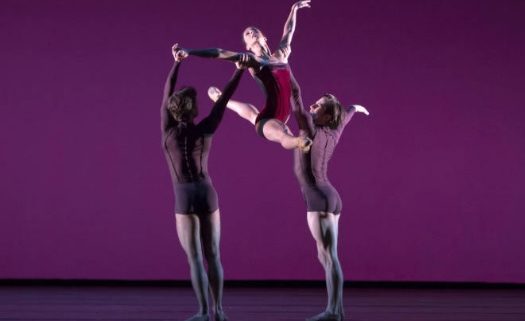Physics and ballet meet in an event to explore the biomechanics of dance
An audience at the Royal Opera House (ROH) saw how knowledge of the biomechanics of dance can reduce the risk of injury to ballet dancers and help them to enhance their performance, in a special evening organised jointly by the ROH and the IOP.
The event on 24 February, Gravity and Grace: The physics of ballet, explored the relationship between physics and ballet and included some demonstrations of ballet steps and sequences that were simultaneously captured through motion sensor tracking and displayed on a screen.
One startling fact to emerge from previous analysis of motion tracking is that the force bearing down through a dancer’s ankles in certain movements can be 14 times their own body weight, biomechanics expert Dr James Shippen explained. Introducing the physics concepts relevant to analysing dance, Shippen, a principal lecturer at Coventry University, said that very large forces could be generated during dance, so it was essential to understand them.
Torques were particularly important in ballet, as were the trajectories of ballet dancers’ centres of mass and their angular momentum, he said. The aesthetic effect of a move could be enhanced by increasing the time that the audience perceived a dancer to be in the air, he said, and this could be done by manipulating the position of a dancer’s centre of mass.
Some forms of Irish dancing could present an even greater risk of injury than ballet, he said, describing how his biomechanics research team had worked with Riverdance to reduce the load on their dancers’ ankles from 14 times their body weight to 8 times. This had been achieved by subtle changes that hardly any audience members would notice – an important consideration if biomechanics came into conflict with aesthetics, he said.
The origins of the work with motion tracking were in clinical settings, he said. The software had been developed within hospitals in the mid-1970s, then came out into sport science in the mid-1990s and now was also being used in the artistic world. “There’s no way I could teach you anything about dance but I can perhaps help to show you how to reduce injury,” he said.
Sharing the floor with Shippen were Sian Murphy, assistant ballet mistress and former first artist of the Royal Ballet, who introduced the evening, ballet rehabilitation specialist and class teacher of the Royal Ballet, Brian Maloney, and Aud Jebsen Young Dancer at the Royal Ballet, Giacomo Rovero.
The audience were shown an animation of a dancer performing a sissone, a grand jeté to attitude, a double revoltade, a double saut de basque and a 540 jump. These showed him as a skeleton with key muscles at work – those bearing the most load were coloured red while those bearing a medium load were green and those bearing no load were coloured blue.
Part way through the evening, Rovero then performed some short dance sequences under Maloney’s direction with 17 sensors attached to his body while a simplified stick-like video of him was displayed in real time. In this his centre of mass was shown as a small green sphere.
Asked what he thought of the screen displays, Rovero commented: “Seeing my avatar was very weird at first, but very interesting. Sometimes it’s difficult to understand what you’re doing wrong, but to see someone doing it, which is you, helps you to put corrections into practice.”
Maloney explained that part of his role was to reduce the risk of injury and to help dancers to recover safely.
Shippen said: “We see things from different viewpoints but we want a common outcome. It’s the overlap of these disciplines that’s interesting.”
Speaking about the event, the IOP’s public programmes manager, Toby Shannon, said: “Last week’s event in partnership with the ROH was a great example of how science and the arts can work together for the benefit of both. It was fascinating to hear how we can use the science of biomechanics to help to make ballet safer for the dancers and to aid their recovery but also that we can use ballet to get an insight into the incredible things that the human body can do.
“It was also my first ever experience of watching ballet so it was a great privilege to see world-class dance at such close range and to get a rare glimpse into the artistry and dedication that it takes to make this art form a reality.”
Image credit: Royal Opera House


